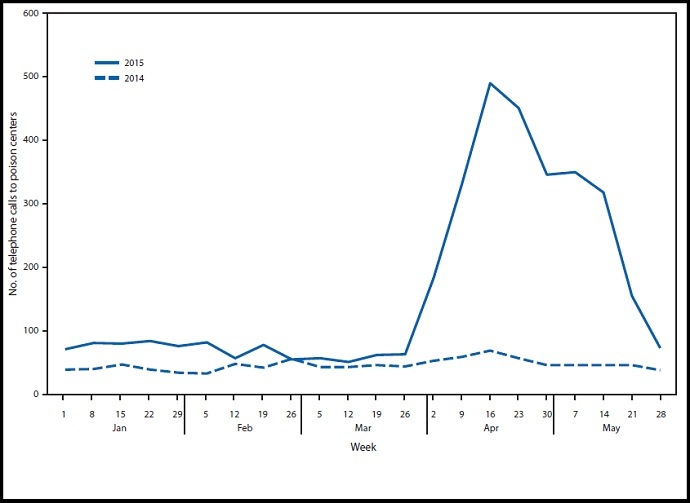The Rise of Synthetic Marijuana And What It Means For You

By:
As the legal marijuana market continues to grow, reports of synthetic marijuana problems have also increased. What is synthetic marijuana, though? Sold under names such as Spice, Spike, K2, and Black Mamba, these manufactured drugs appear in liquor stores and head shops around the world, marketed as safe, non-narcotic alternatives to marijuana. But the evidence—both anecdotal and documented—suggests otherwise.
Synthetic marijuana was originally thought to have been composed of natural herbs, combined together in such a way as to mimic the effects of homegrown cannabis.
This so-called "herbal incense" came about as a response to increased demand for marijuana, typically obtained through illegal supply channels.
Starting in the early 2000s, synthetic cannabis (namely Spice) made its way to the European market, then quickly spread across the Atlantic. Once taken to the lab for chemical analysis in 2008, scientists discovered that there was essentially nothing "natural" about these products. All 50 states have now banned Spice and K2, but new chemical compounds are still being created—often in underground labs throughout China, where designer drug production has been a continual problem.
"More recently, a few states have also passed laws restricting marketing, display, labeling, and advertising of these substances by utilizing consumer protection laws or classifying these activities as deceptive trade practices," according to the National Conference of State Legislatures. "Where substances are not specifically banned, law enforcement and prosecutors have also creatively used existing provisions such as agricultural regulations, consumer protection laws, and public nuisance laws to prosecute those selling these drugs."
In response to the increased overdoses of synthetic marijuana, leading to significant synthetic marijuana deaths, the District of Columbia passed emergency legislation on Friday, signed into law by Mayor Muriel Bowser.
"It institutes harsh new penalties to businesses that sell the dangerous substances," according to RT.
"The new law gives the police chief power to shut down businesses caught selling synthetic drugs for four days. First offenses also carry a fine of $10,000—five times the previous penalty. Businesses caught on a second offense have their business licenses revoked, shutting them down permanently."
The Center for Disease Control and Prevention has also been actively monitoring synthetic drug trends in the United States.
"Monthly calls related to the adverse effects of synthetic marijuana jumped 330 percent between January and April," the CDC found. "The number of those calls to poison control centers between January and May was also a 229 percent increase over the same time period in 2014, from 1,085 calls to 3,572."
 Reuters - rt.com
Reuters - rt.com
Though spice, a synthetic cannabis product, has regularly appeared in headlines since 2010, when an Iowa teenager apparently shot himself in the head after smoking K2—a well-known and marketed brand of spice—reports of poisonings from new synthetic drugs such as Spike, have also raised public attention to the growing issue.
But with tougher regulations, public scrutiny, and an influx of reports on the dangers of synthetic drugs, how has the market continued to thrive?
In "A Guide to Spice," VICE reporter Max Daly writes that "legal highs are a generational thing, part of a new breed of psychoactive substances including mephedrone that their parents haven't got a clue about," and also "because it's cheap, easy to get hold of... and has an air of legality about it."
It makes sense, of course: Cheap, legal highs have always been sought after by the nation's youth. But questions remain as to generational appeal and the market's long-term sustainability.
A recent New York Times Magazine feature, "Spike Nation," explored the rise in Spike-related overdoses in Syracuse, New York, and the difficulty of regulating the often unpredictable synthetic drug market.
"Since 2008, when authorities first noted the presence of synthetic cannabinoids in 'legal marijuana' products, periodic surges in overdoses have often coincided with new releases, and emergency doctors have had to learn on the fly how to treat them," the Times reported. "This latest surge is notable for the severity of symptoms: seizures, extreme swings in heart rate and blood pressure, kidney and respiratory failure, hallucinations."
"Many patients require such enormous doses of sedatives that they stop breathing and require intubation, and yet they still continue to struggle violently."
Stories such as these have left many wondering what's to be done.
"The increasing number of synthetic cannabinoid variants available, higher toxicity of new variants, and the potentially increased use as indicated by calls to poison control centers might suggest that synthetic cannabinoids pose an emerging public health threat," the CDC concluded. The federal agency has recommends "greater public health surveillance and awareness, targeted public health messaging, and enhanced efforts to remove these products from the market."
The trend is startling to say the least. It's victims are, demographically speaking, all across the board. The struggle to regulate the synthetic drug market is one issue—but another reality of the crisis is increasingly clear: there's a distinct difference between grown marijuana and chemically manufactured marijuana, and that can be the difference between getting high and getting hospitalized.
